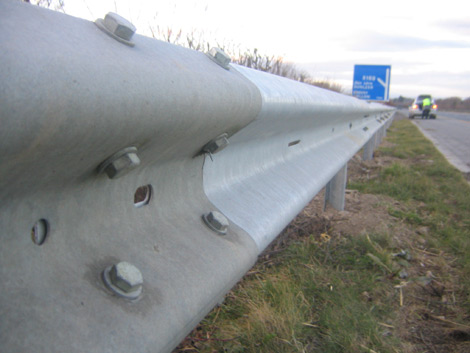We aim to develop products and techniques which not only increase cost savings, but that benefit the environment, working towards reducing our carbon footprint and providing more sustainable delivery.
Safety barriers are damaged all over the road network every day as a result of road traffic collisions, and need to be repaired.
In partnership with our supply chain, we developed technology to restore damaged vehicle restraint systems (VRS) to the required standards for re-use, rather than simply recycling the steel.
A facility has been established where the damaged barrier is taken, then sorted and re-rolled to ensure the correct shape is ‘rolled’ back into the damaged barrier.
The beam is then tested on a special machine that weighs and measures the tensile strength in the beam to ensure that all the original designed beam properties are retained.
Other checks are made prior to renovation to ensure that the physical properties of each component fulfill actual objective testing criteria. After manufacture the components are taken to galvanisers for re-coating in zinc and then they are ready for call off.
Over 6,800 individual barrier beams have been processed using this technique for re-use on the network.
The process has the following key benefits:
- Reduction in carbon emissions of an estimated 727,375kg CO2 saved per year
- Recycling of existing materials rather than utilising raw material – preserving valuable natural resources
- Cost certainty – process is resilient against steel prices increases
- Repair certainty – we have a ready made stock of safety barrier components to repair accident damage
Did you find this article helpful?
Please rate this article

Loading...





